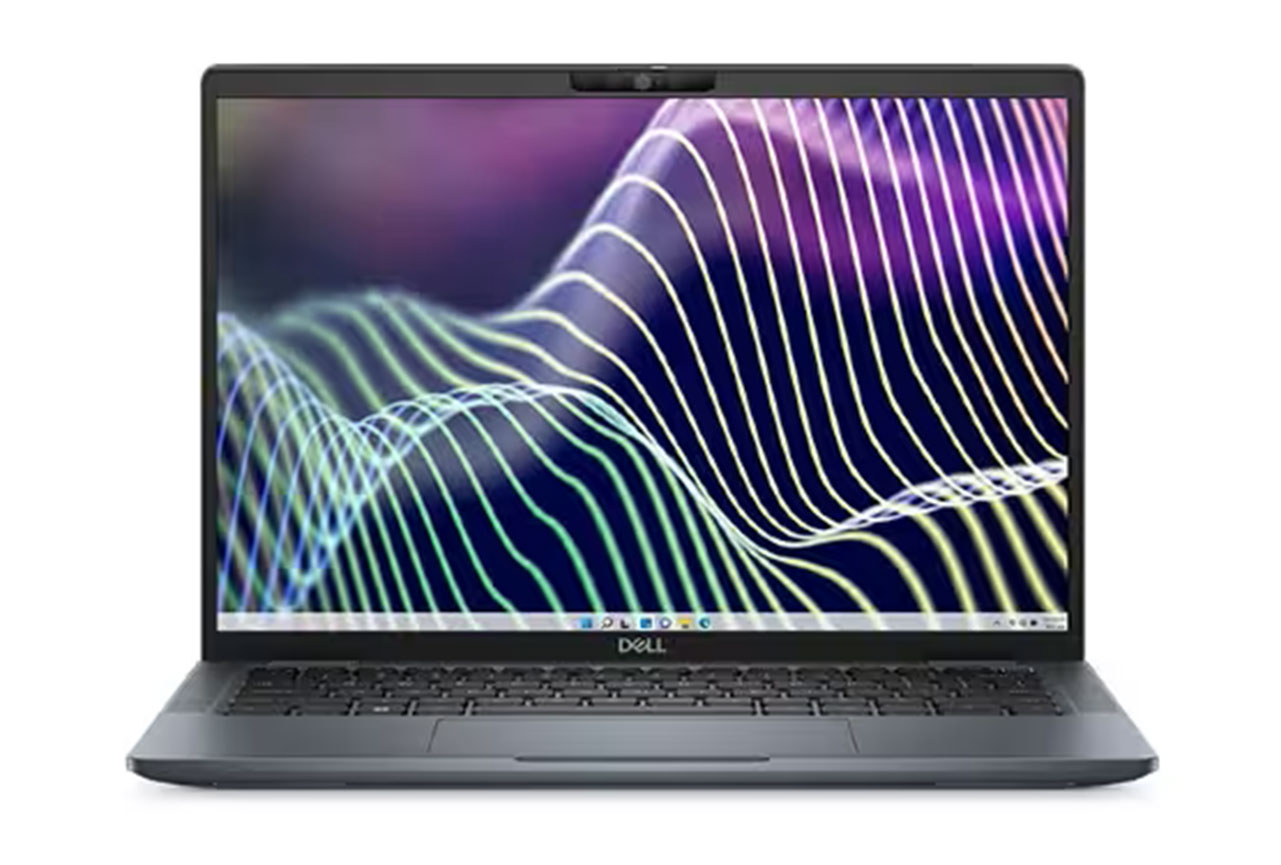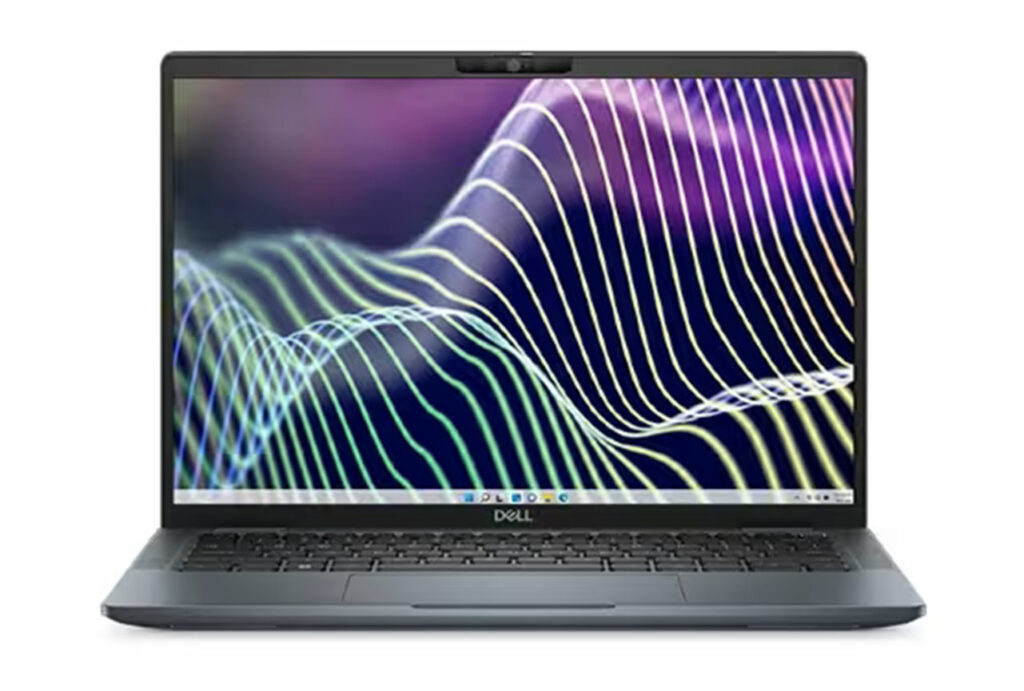We put the Dell Latitude 7340 2-in-1 through our rigorous DXOMARK Laptop test suite to measure its performance in sound, camera and display. In this review, we will break down how it fared in a variety of tests and several common use cases.
Overview
Scoring
Use-case and feature subscores included in the calculations of the global score
 Dell Latitude 7340 2 in 1
Dell Latitude 7340 2 in 1

94
camera
62
Apple MacBook Pro 14" (M3 Pro, 2023)
Best: Apple MacBook Pro 14" (M3 Pro, 2023) (93)
39
Lenovo ThinkPad X9 Aura
Best: Lenovo ThinkPad X9 Aura (56)
59
Apple MacBook Pro 14" (M3 Pro, 2023)
Best: Apple MacBook Pro 14" (M3 Pro, 2023) (76)
70
Apple MacBook Pro 14" (M2 Pro, 2023)
Best: Apple MacBook Pro 14" (M2 Pro, 2023) (83)

126
display
65
Apple MacBook Pro 14" (M3 Pro, 2023)
Best: Apple MacBook Pro 14" (M3 Pro, 2023) (84)
47
Apple MacBook Pro 14" (M3 Pro, 2023)
Best: Apple MacBook Pro 14" (M3 Pro, 2023) (95)
77
Honor MagicBook View 14 (2022)
Best: Honor MagicBook View 14 (2022) (84)

137
audio
136
Apple MacBook Pro 14" (M2 Pro, 2023)
Best: Apple MacBook Pro 14" (M2 Pro, 2023) (149)
124
Acer Swift Go 14
Best: Acer Swift Go 14 (133)
113
Asus Zenbook 14X OLED (2023)
Best: Asus Zenbook 14X OLED (2023) (153)
Pros
- Very good overall performance, particularly in video calls
- Very good audio capture performance
- Good display readability
- Good and accurate color rendering from camera
Cons
- Limited in duplex situations (gating when voices overlap) and when voices are too quiet
- Colors lack fidelity and saturation in HDR; inconsistent color accuracy overall
- Not especially suited for music & video audio purposes
The new Dell Latitude 7340 2-in-1 currently reaches first place among Windows laptops in our rankings. Like the brand-new Dell Latitude 9440 2-in-1, the 7340 2-in-1 features a consistent performance among audio, camera and display tests, and is especially well suited for video call applications. It has great audio capture and its display has a good brightness range, ensuring good overall readability. Similar to the 9440 model, the 7340 is not especially suited for multimedia audio playback because its timbre underperforms in the lower frequencies.
Test summary
About DXOMARK Laptop tests: For scoring and analysis in our laptop reviews, DXOMARK engineers perform a variety of objective tests and undertake more than 20 hours of perceptual evaluations under controlled lab conditions and real-life scenarios. (For more details about the Laptop protocol, click here.)
The following section gathers key elements of our exhaustive tests and analyses performed in DXOMARK laboratories. Detailed performance evaluations under the form of reports are available upon request. Do not hesitate to contact us.
Dell Latitude 7340 2-in-1 overall & use-cases scores
Video Call
130
Dell Latitude 7340 2 in 1
144
Apple MacBook Pro 14" (M2 Pro, 2023)
Apple MacBook Pro 14" (M2 Pro, 2023)
About DXOMARK Laptop tests
DXOMARK's Video call use case is a score that evaluates how a device handles video calls and videoconferencing in multiple conditions. This score focuses on the camera performance and the capture and playback rendering of voices.
The Dell 7340 2-in-1’s camera provides accurate color rendering most of the time, although color shading is visible. Targets are significantly underexposed in backlit scenes. The display has a good brightness range, although colors are not always accurate. With a front-facing focus, the device has very good audio capture, enhancing intelligibility and leaving out background noise in most situations. Its performance is somewhat limited when voices overlap, with obvious gating in duplex situations, and the built-in microphones don’t always pick up quiet voices.
Camera
94
Dell Latitude 7340 2 in 1
135
Apple MacBook Pro 14" (M3 Pro, 2023)
Apple MacBook Pro 14" (M3 Pro, 2023)
Camera texture acutance on Deadleaves with illuminance levels
This graph shows the evolution of texture acutance with the level of lux measured on a Deadleaves chart.
The following graphs show the objective measurements performed in our camera labs:
Camera visual noise evolution with illuminance levels
This graph shows the evolution of spatial visual noise with the level of lux. Spatial visual noise is measured on the visual noise chart in the video noise setup. DXOMARK visual noise measurement is derived from ISO15739 standard.
Target exposure on face with illuminance levels
These measurements take place on a setup combining realistic mannequins and a backlit panel simulating high dynamic range conditions. This graph shows the evolution of lightness measured on the forehead of the realistic mannequin with the level of lux, for multiple lighting conditions. The lightness is measured in L*. Delta EV specifies the difference of luminance in stops between the face and the light panel simulating HDR conditions.
Target exposure on face with illuminance levels in HDR conditions
These measurements take place on a setup combining realistic mannequins and a backlit panel simulating high dynamic range conditions. This graph shows the evolution of lightness measured on the forehead of the realistic mannequin with the level of lux, for multiple lighting conditions. The lightness is measured in L*. Delta EV specifies the difference of luminance in stops between the face and the light panel simulating HDR conditions.
Target exposure on face with illuminance levels in HDR conditions
These measurements take place on a setup combining realistic mannequins and a backlit panel simulating high dynamic range conditions. This graph shows the evolution of lightness measured on the forehead of the realistic mannequin with the level of lux, for multiple lighting conditions. The lightness is measured in L*. Delta EV specifies the difference of luminance in stops between the face and the light panel simulating HDR conditions.
Audio
141
Dell Latitude 7340 2 in 1
144
Apple MacBook Pro 14" (M2 Pro, 2023)
Apple MacBook Pro 14" (M2 Pro, 2023)
Audio capture scores comparison
The following graphs show the frequency response, distortion and directivity in capture, recorded in our semi-anechoic room:
Audio capture frequency response
A 1/12 octave frequency response graph, which measures the volume of each frequency captured by the laptop when recording an objective test signal at 1 meter in an anechoic environment.
Audio capture directivity
Directivity graph of the laptop microphone(s) when capturing test signals using the camera app. It represents the acoustic energy (in dB) over the angle of incidence of the sound source (normalized to the angle 0°, in front of the device).
About DXOMARK Laptop tests
DXOMARK's Video and Music use case score evaluates the capability of a device to reproduce multimedia usages such as videos, movies and music playback in indoor conditions. This score focuses on the display performance and audio-playback rendering.
The 7340’s display offers correct color rendering and gamut adaptation for SDR videos, and its more than 500 nits of brightness ensures satisfactory readability in all ambient lighting. For HDR content, however, the gamut is narrow, and even very saturated colors appear faded.
The display’s minimum brightness is 32 nits, which is too high for comfortable use in a low-light environment. The lack of bass and body in audio contributes to a generally sub-par music and video playback performance.
The following chart presents the display subscores for the multimedia use case:
Display scores comparison
The following graphs show the objective measurements performed in our display lab:
Display gamut coverage for video contents
The primary colors are measured both in HDR10 and SDR. The extracted color gamut shows the extent of the color area that the device can render. To respect the artistic intent, the measured gamut should match the master color space of each video.
Display reflectance measurement (SCI)
Measurements above show the reflection of the device within the visible spectrum range (400 nm to 700 nm). It includes both diffuse and specular reflection.
Display reflectance profile
Display brightness uniformity
0.759
cd/m²
0.707
cd/m²
0.737
cd/m²
0.692
cd/m²
0.73
cd/m²
0.703
cd/m²
0.658
cd/m²
0.638
cd/m²
0.667
cd/m²
 Distribution of brightness (min)
Distribution of brightness (min)
500.6
cd/m²
472.3
cd/m²
491.8
cd/m²
482.7
cd/m²
505.8
cd/m²
478.9
cd/m²
471.8
cd/m²
442.2
cd/m²
471.5
cd/m²
 Distribution of brightness (max)
Distribution of brightness (max)
This illustration shows the brightness measured on nine zones of the display for minimum brightness (left) and maximum brightness (right) for SDR content.
Display SDR EOTF measurement
This graph represents the rendering of contrast (gray levels) for SDR video content, measured in the dark. We expect to be close to the 2.2 or 2.4 gamma references.
Display peak brightness for video contents
Display white point
This graph represents the color temperature of white content, compared with the reference (Daylight illuminant D65) measured in the dark on video at minimum and maximum brightness.
The following chart presents the playback for the multimedia use case:
Audio playback scores comparison
The following graphs show the frequency response, distortion and directivity in multimedia playback, recorded in our semi-anechoic room:
Audio playback frequency response
A 1/12 octave frequency response graph, which measures the volume of each frequency emitted by the laptop when playing a pure-sine wave in an anechoic environment.
Audio playback Total Harmonic Distortion + Noise



 Distribution of brightness (min)
Distribution of brightness (min)
 Distribution of brightness (max)
Distribution of brightness (max)





DXOMARK encourages its readers to share comments on the articles. To read or post comments, Disqus cookies are required. Change your Cookies Preferences and read more about our Comment Policy.